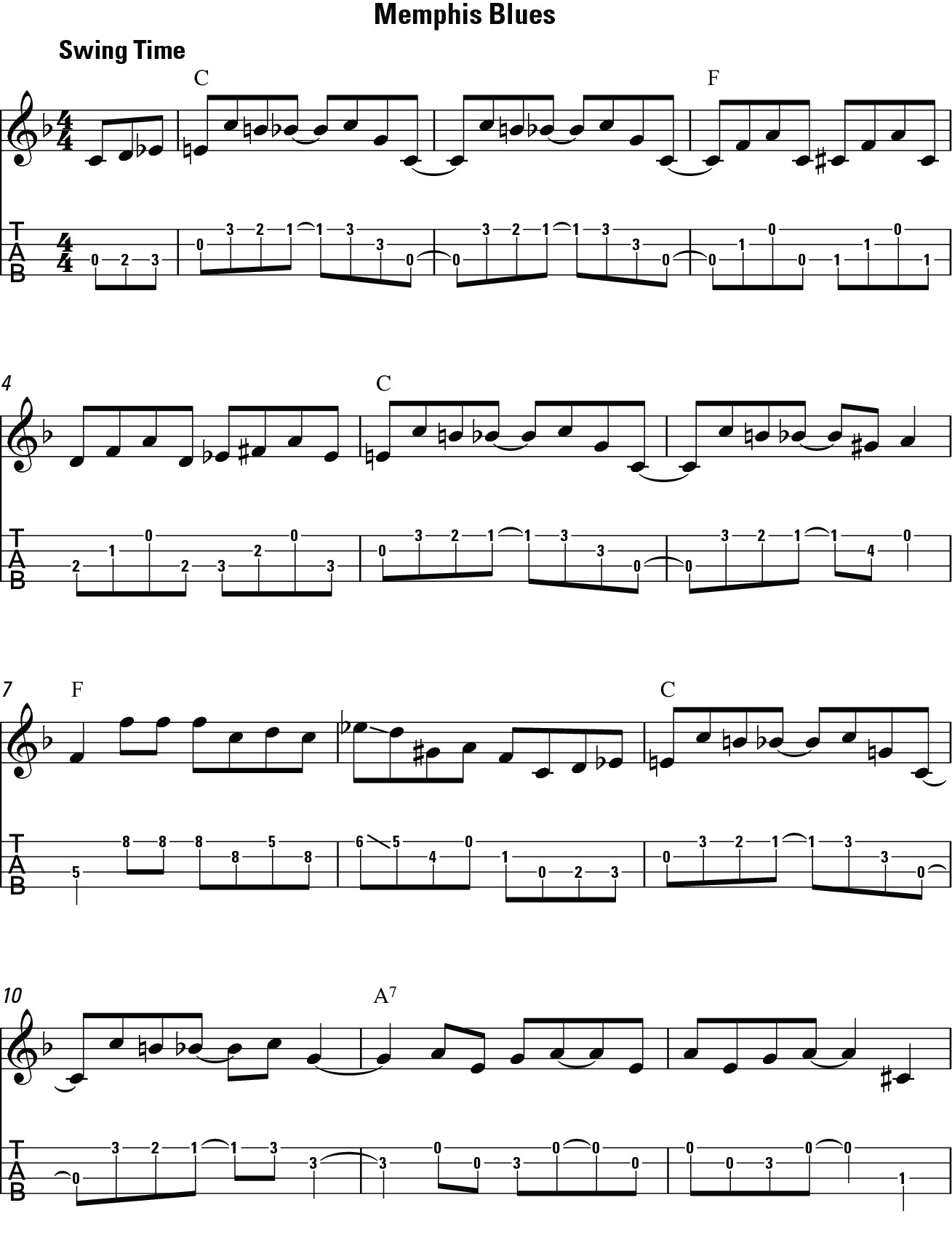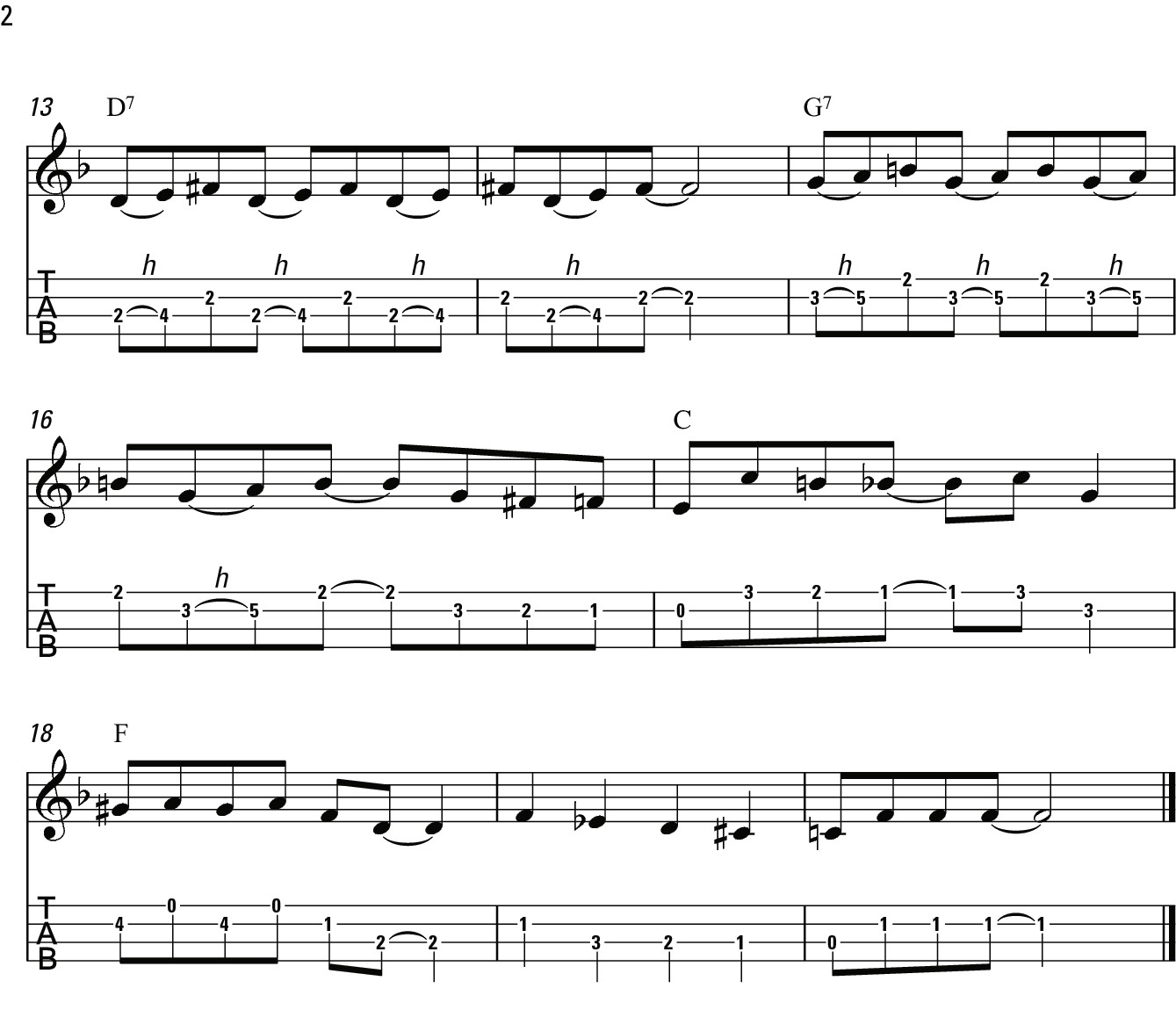Ukulele For Dummies (53 page)
Read Ukulele For Dummies Online
Authors: Alistair Wood

Leading the Blues
 The 12-bar blues that I describe in the preceding sections may be the backbone of the blues, but the real action is in the lead parts (playing melody and instrumental sections). âMemphis Blues' (shown in Figure 12-16; Track 71) is a W.C. Handy tune from 1912 that mixes blues with early jazz and ragtime to create a timeless piece.
The 12-bar blues that I describe in the preceding sections may be the backbone of the blues, but the real action is in the lead parts (playing melody and instrumental sections). âMemphis Blues' (shown in Figure 12-16; Track 71) is a W.C. Handy tune from 1912 that mixes blues with early jazz and ragtime to create a timeless piece.
Figure 12-16:
Tab for âMemphis Blues'.


The trickiest part of this tune comes in bars seven and eight, where you switch from playing in the open position up to the fifth fret and back down.
 Take advantage of the open A-string notes by shifting positions while those notes are still sounding.
Take advantage of the open A-string notes by shifting positions while those notes are still sounding.
When you're moving up at the start of bar seven, be sure to play the C-string at the fifth fret with your index finger. Doing so means that your hand is in the right position for playing the rest of the bar.
When moving down in bar eight, use your middle finger to play the slide on the A-string from the sixth fret to the fifth, which means that your index finger is ready to play the E-string at the fourth fret.
Soloing with the Blues Scale
Blues soloing is such a set form that it even has a scale named after it. Luckily, the blues scale differs from the minor pentatonic scale (that I discuss in Chapter 10) by just one note.
Discovering the first position blues scale
To change the C minor pentatonic into the C blues scale, just add the E-string, second fret. The result is the scale box in Figure 12-17 and the scale notation shown in Figure 12-18.
Figure 12-17:
Scale box for the C blues scale.

Figure 12-18:
Tab for the C blues scale.

 You can shift this pattern up to create the scale to match any key. For example, shift the C blues scale up two frets and you get the D blues scale shown in Figure 12-19.
You can shift this pattern up to create the scale to match any key. For example, shift the C blues scale up two frets and you get the D blues scale shown in Figure 12-19.
Figure 12-19:
Scale box for the D blues scale.

Using the second position blues scale
Moving up the neck, you get the second position blues scale. You add just one note to the second position minor pentatonic scale that I describe in Chapter 10. For the C blues scale, you add the C-string at the sixth fret, which creates the scale box shown in Figure 12-20.
Figure 12-20:
Scale box for the C blues scale in the second position.

 To change key, simply move this scale up or down. For example, move things down three frets and you get the A blues scale shown in Figure 12-21.
To change key, simply move this scale up or down. For example, move things down three frets and you get the A blues scale shown in Figure 12-21.
Figure 12-21:
Scale box for the A blues scale.

Scaling the heights with solos
The blues scale works perfectly over the 12-bar shuffle that I describe in the earlier section âShuffling the blues'. Here I present two solos â one in the key of C and the other in A â based around the blues scale (and remember: head back, eyes closed and intense facial contortions!).
 Bear the following points in mind when you're playing through these two solos:
Bear the following points in mind when you're playing through these two solos:
